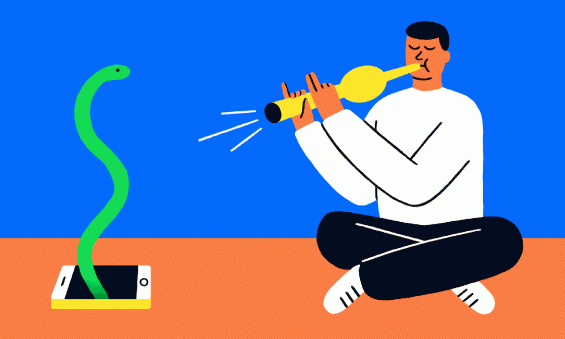7 strategies to keep your phone from taking over your life
By Chris Bailey on September 20, 2018 in News + Updates
Raúl Soria
We’re distracted like never before — and our phones are probably the biggest culprit. But there is a way you can live with one and still get things done. Productivity expert Chris Bailey shares what worked for him.
When your mind is even slightly resisting a task, it will look for novel things to focus on. And it doesn’t need to look far — only as far as your phone.
Our smartphones provide an endless stream of bite-sized, delicious information for our brains to consume. It’s easy to get hooked, even to feel addicted. And most of us would prefer not to feel this way. So last year, I started to hack my relationship with my phone, looking for small behavior changes I could make so that I would begin using my phone with intention, not automatically.
Here are 7 strategies I found useful to prevent phones from taking over our time and attention:
Strategy #1: Use airplane mode, even when you’re not in the air.
Airplane mode isn’t just for travel. Use it when you’re working on an important task or having coffee with someone you value. It makes a bigger difference than simply putting your phone in your pocket; when you do that, you’re still aware of the buzzing, vibrating notifications and distractions piling up and waiting for you. Airplane mode eliminates the possibility that notifications will disrupt your work or conversation.
Strategy #2: Do a phone swap.
While you should tuck your phone away while you’re with family or friends, there are times when you need to have it handy. On these occasions, try swapping phones with the people you’re hanging out with. This way, if you have to look something up, make a call, or send yourself a reminder, you’ll have a device to do it with — but it won’t be one that will suck you into a personalized world of distraction. If there is an urgent call or message on your phone, of course, your swap-mate has to promise to tell you, and vice versa.
Strategy #3: Designate a “distractions” device.
This may sound silly, but I recently decided that my iPad would be dedicated to one sole purpose: my favorite distractions. I took my social media apps off my phone; instead, I use my iPad for these and all things distracting. Delegating those tasks to the iPad — which I leave in another room — lets me focus longer, and more deeply, at times when I do need to keep my smartphone by my side.
Strategy #4: Prune your apps.
Scroll through your phone and delete the apps on which you waste too much time and attention — social media and news apps included. This can feel refreshing, like spring cleaning for your phone. Step two: Consider getting rid of apps that duplicate functionality with apps on your other devices. For example, your email app may not be worth keeping if you also read mail on your tablet; an investment app you check compulsively might be worth nixing if you can access that information on your laptop.
Strategy #5: Create a “Mindless” folder.
So you can’t quite get rid of all your time-wasting apps — and that’s OK. Just house your most distracting apps — the ones that pull you into autopilot mode — in a “Mindless” folder on your phone or tablet. The folder’s name should serve as a reminder every time you’re about to distract yourself.
Strategy #6: Mind the gaps.
This one takes willpower, but consciously resist the urge to tap around on your phone when you’re waiting in line at the grocery store, walking to the coffee shop, or in the bathroom. Try to use these breaks to reflect and recharge. Mindlessly burning these moments on your phone isn’t worth it.
Strategy #7: Think twice before adding a new device to your life.
Harvard Business School professor Clayton Christensen has developed a useful way of assessing the tech in your life: identify what “jobs” you’re “hiring” a device to do for you. For example, you hire your phone to be an alarm clock, camera, timepiece, GPS navigator, video game console, email and messaging machine, boarding pass, music player, calendar, map and more. But as you accumulate more devices, their jobs can become redundant. Before you add one to your life, ask: What jobs am I hiring it to do that the devices I already own can’t? Thinking about electronics this way will force you to consider why you own them and, perhaps even more important, enables you to bring them into your life only with intention.
Excerpted with permission from the new book Hyperfocus: How to Be More Productive in a World of Distraction by Chris Bailey, published by Viking, an imprint of Penguin Publishing Group, a division of Penguin Random House, LLC. Copyright © 2018 by Chris Bailey.
Watch Chris Bailey’s TEDxLiverpool talk here:
ABOUT THE AUTHOR
Chris Bailey is a productivity expert and the author of the bestselling book “The Productivity Project,” which detailed his year-long effort — involving dozens of experiments on himself — to discover how to become as productive as possible. He speaks to organizations and audiences around the world on productivity.
This piece was adapted for TED-Ed from this Ideas article.
Tags: Mobile, Productivity, Technology